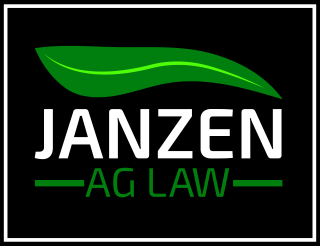Zoning for Solar Farms
/Solar farms are the latest and hottest kid on the block when it comes to renewable energy in the midwest. As farmers are facing trade barriers, unpredictable weather, high land prices, and other financial challenges, the sun is proving to be an attractive source of revenue. There are questions about what should be included in a solar lease, which Todd posted on here, and I’ll write more on later. This post instead deals with local government considerations as counties welcome solar power.
Identifying and addressing barriers to solar installations in the local zoning code will reduce solar costs and encourage local economic investment. Commissioners, planning directors, county officials, and area plan commissioners should consider the following five issues:
Setbacks. How far back from property lines should solar equipment be located? How far from a school, residence, or other public use? Solar facilities do not present the same noise concerns a wind turbine might, but the panels are visible and the associated equipment may create some background noise.
Pollinators. There is a global movement to plant native flowers under and around solar facilities. The flowers can be used to create an attractive habitat to pollinators like bees and butterflies without shading the solar panels. At least three new pollinator-friendly solar projects have been announced in Indiana this year. Local governments could consider requiring a solar company to plan and maintain pollinator-friendly habitats as part of the overall landscaping of a solar farm. These plants provide other benefits too, like reduced erosion, improved soil health, and cooler microclimates under the panels.
Permitted Uses. Solar should be added as a permitted use in appropriate agricultural zones. This way a solar farm would not require a special exception hearing as long as it complied with the general district requirements. If a special exception is needed, the definitions should be clear and the requirements should be objective (not subjective). Considerations for a special exception might include soil grading, stormwater management, requirement of a removal bond, and appropriate setbacks.
Definitions. The zoning code should include concise definitions for solar facilities and equipment that allows for future technological developments. It should include passive and active systems. Counties should include storage in the definition to accommodate future growth in battery storage technology.
Visibility. Solar facilities in rural parts of the state should be subject to different rules than those developed inside city limits. A solar farm built on an old corn field should not have to meet the same requirements as the panels installed on top of a residential garage. Barriers such as shelter belts or screening vegetation may be required, but only if they won’t cast a shadow on the solar collecting panels.
Bonus! It isn’t zoning, but county assessors should determine how changing tax assessments will be handled. Properties currently assessed as farmland might look very different once all the solar equipment is installed.
This is an initial list of items for local governments to consider to attract solar investments in rural areas. The right zoning code can reduce costs, increase neighbor harmony, beautify the area, and ensure orderly development.





